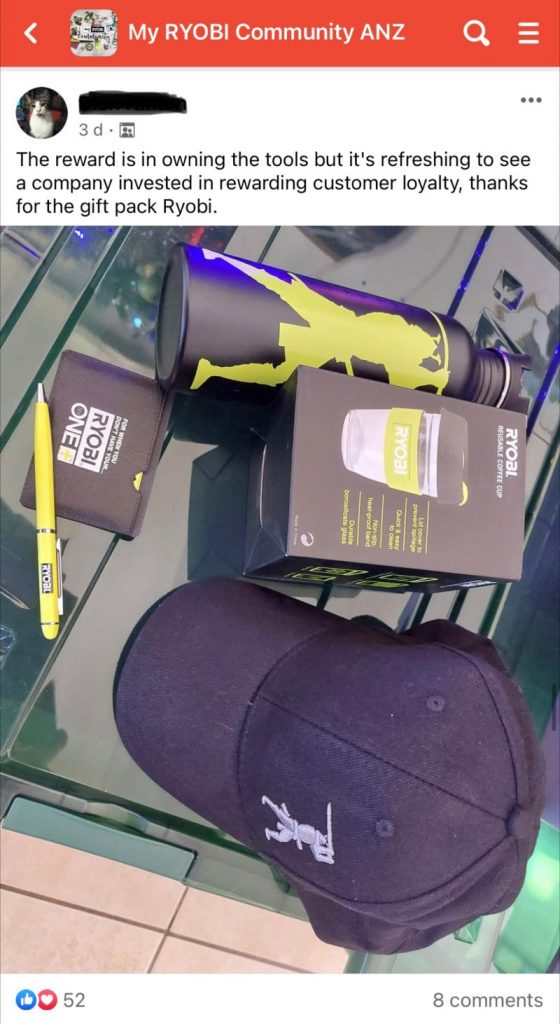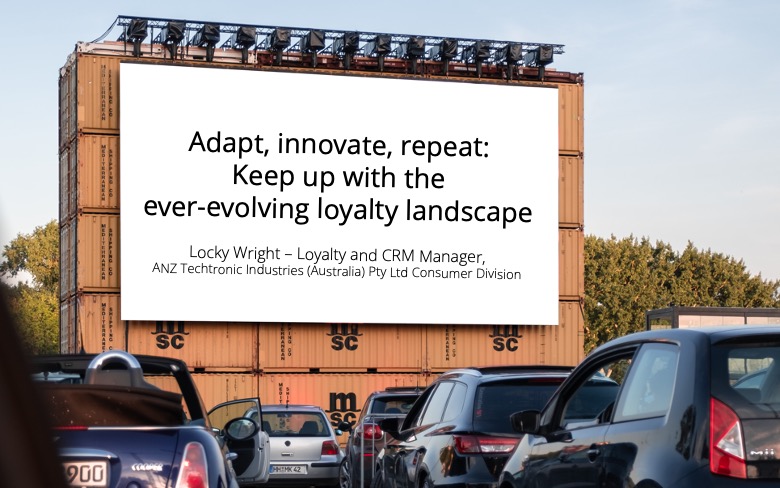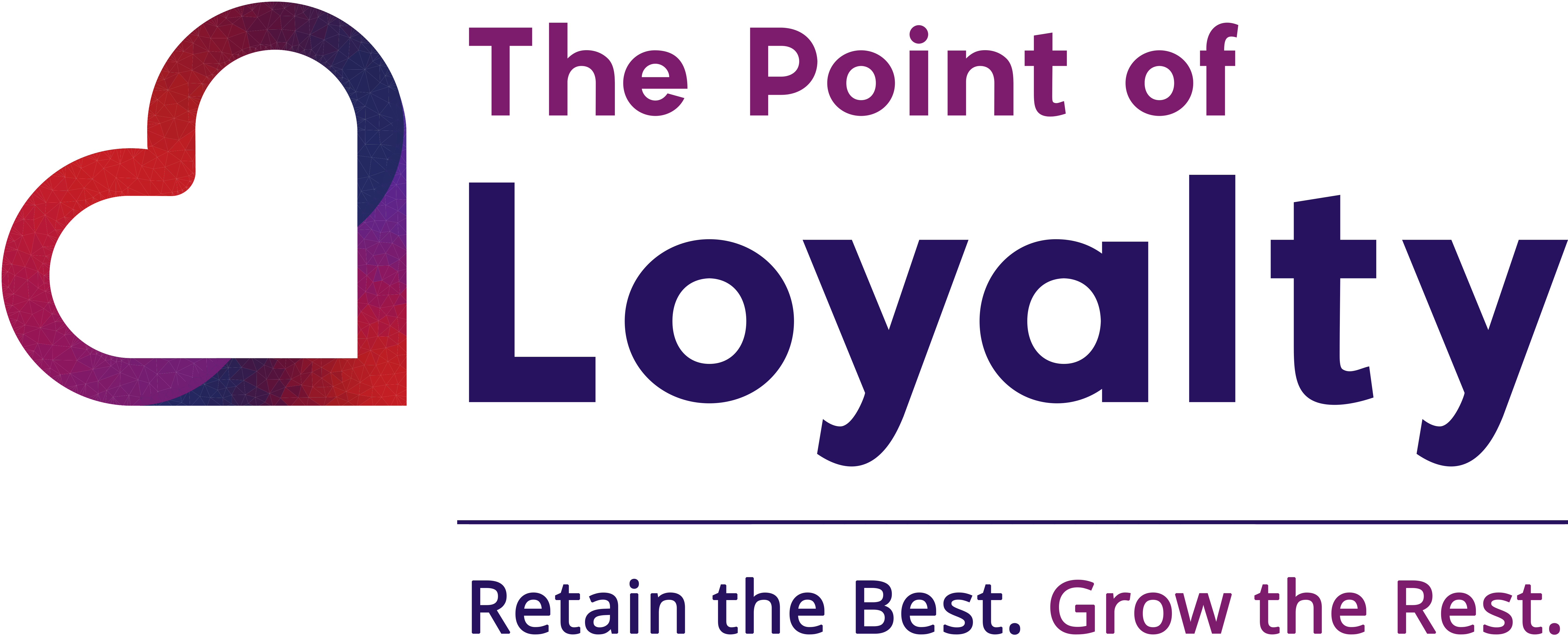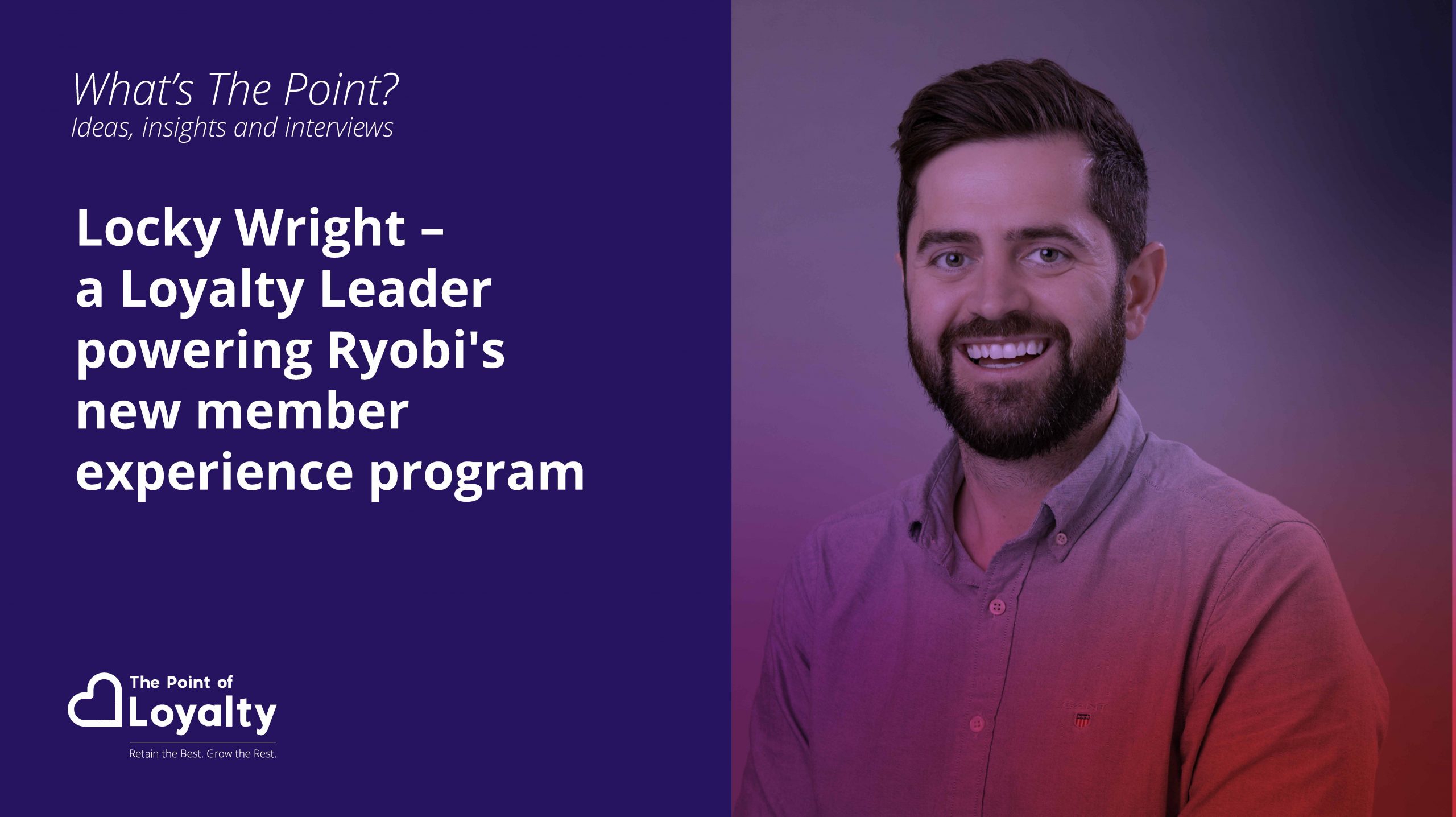An interview by Adam Posner with Locky Wright - Loyalty and CRM Manager, ANZ Techtronic Industries (Australia) Pty Ltd – Consumer Division
I’ve been looking forward to this Loyalty Leader interview (#27) with Locky, who is leading My Ryobi, the member experience program of the Ryobi Brand part of the TTI Group.
With 2024 in progress, the timing was just right for this interview as the new My Ryobi member experience program launched in August 2023 has had some time to engage customers and provide insights, learnings and results (some of which are shared in this article).
I love these interviews as I always hear new or different perspective on what makes programs thrive or the watchouts that could have negative impacts on the future power of programs.
The insights shared by Locky are valuable to all loyalty marketers, especially the insight on managing expectations – both the business and the customers’ (more on that in the article).
Oh, it was also a big surprise to me that Locky was involved in the Tiger Air ‘Infrequent flyers Club’ series (have a watch here and here - so clever and laugh out loud)!
Enjoy!
- So, who is Locky (outside of work) + a little on your work biography
I am an outdoors and sports lover. You'll often find me doing exercise outdoors, walking or running along the streets with Saffy (pic below) our Nova Scotia duck tolling retriever (I’d never heard of that breed before).

In terms of sport, I’m a hugely passionate Geelong supporter and try to get to all the games. Podcasts are a passion. I’m currently listening to 15 Minutes with The Boss by the Australian Financial Review and Hard Fork, which is all about the latest in AI and technology. I’m also close to completing my MBA (impressive!).
My partner and I are also expecting our first child in late May, so not surprisingly I’ve become a DIYer around the house and garden which circumstantially aligns well with working at TTi.
As for my work experience, I started my career in more generalist marketing roles in the low-cost aviation industry, working with Tigerair and then AirAsia from 2013 to 2018.
And you'll love this, Adam, in my first role at Tigerair, I was part of the team that developed the Tigerair Infrequent Flyers Club (Oh wow!!! I loved this series, so clever and funny)
Interestingly it poked fun at the full-service airline’s structured formal loyalty programs which I think is quite funny now as I am in a more formal loyalty role and throughout my career have managed premium loyalty programs.
(I look back at the ‘Wings beneath my wings’ ad and you see the chickens flying through the air in the barn. And I remember that day when we were filming it, it was probably about 30 degrees, and it was stinking hot with hundreds of chickens flying everywhere. It was quite comical!)
That ignited my interest in loyalty and as a result, I moved into a more traditional loyalty role, looking after loyalty, CRM, and customer experience for Hertz car rental across Asia Pacific. Part of my remit there was, to localise the global Gold Plus rewards program, making it relevant for the Australian market and the rest of Asia due to the US market whereby the global office is located.
In addition to that, I launched the exclusive Hertz Platinum program into Australia and New Zealand, which was an invitation only program. I also launched Hertz’s carshare company, Flexicar’s partnership with Velocity Frequent Flyer program, looking at how we add value to the customers beyond just the product itself.
After a short stint at Spotlight Retail Group I moved to Techtronic Industries, the parent company of Ryobi. My remit here was to stand up a loyalty program and expand Ryobi’s first party data whilst also utilising those insights to drive growth.
And that brings us to the new My Ryobi member experience program, which launched in September 2023.
- Tell us about the new My Ryobi member experience program – any stats you can share?
The new My Ryobi member experience program is based on enhancing the customer journey for our customers. The program is designed to help customers care and get the most out of their Ryobi products while also ensuring they have all the information to keep their projects on track.
We do this by providing warranties for their products, a virtual tool kit to track their products, assembly advice, how to and maintenance tips.
We also provide inspiration for new projects along with new product notifications. But wait there’s more, we also provide opportunities to expand and upgrade their tools and existing toolkit. In addition, we add value through competitions.
So, in summary, we look at how we can really enhance that product experience and empower them to undertake their projects with the knowledge they need to do so.
In terms of some performance to-date with it being in the market for about 5-6 months, we have had double digit growth in engagement across key channels.
Our recent surprise and delight initiative (pic below) has driven that engagement significantly.

For the surprise and delight, we identified select customers to reward them with a Ryobi merchandise pack, including a drink bottle, coffee cup, a pen, and a multi-key.
We had phenomenal results with a significant number of shares and thousands of likes across the community generating word of mouth. And more importantly it generated an increase in visits of customers to the My Ryobi portal to register their tools.
Also, to date, we have exceeded forecasted ROI results, which is really promising to see.
So not only are we getting the customer engagement, it’s also delivering the return to the business.
- What is the most unique element of the program?
It is a program for everyone within the power, garden and cleaning space ranging from novices to experts.
It focuses on providing value to all our customers and enhancing the experience as we understand we have a diverse range of customers ranging from those who are just starting to dip their toes into DIY (both within the house and the garden space) to those that are more experienced.
So, our program caters to all providing how to, maintenance tips, inspiration plus much more as mentioned previously to those novices whilst catering to those passionate experts as well.
- If you had to choose the most important measures of success for your program, what would they be?
It’s engagement.
Defined as the frequency of interactions customers are having with the brand and the program across a multitude of touchpoints. These can include interactions with offers, the website, email plus other touch points.
It’s a useful data point and it can be analysed in so many ways. It will tell us how customers are reacting to the program and what their attitudes are towards the program.
If positive engagement is exceeding expectation, the program is performing. If it's decreasing, it's giving you an opportunity to understand areas of opportunity.
One word with many layers to action on. One word that keeps us focused.
Then there is ROI. Importantly, the program must be commercially viable to maintain its long existence.
Engagement combined with ROI. It’s a nice balancing act to get the support for the program to succeed.
- What are some of the challenges you face on an ongoing basis to keep the program relevant/fresh/thriving (internally and externally) and how do you overcome these?
Internally, and from my experience once you've had a successful outcome, the business appetite grows.
It can be difficult to manage the demands from the business without causing saturation for the customer. This can diminish the perceived value of the program as the business expectation starts to outweigh the customers’ expectation creating a friction point.
To manage this, you need to have a plan in place that is aligning and rolling up to an agreed business strategy. This roadmap is a point of reference that you can access to help manage expectations of business vs customer.
Interestingly and in opposition, customers also want more and having implemented our first surprise and delight, they are asking – when are the next ones coming? So how do you manage that? How can you get sufficient content and how can you continually evolve to meet those customer demands?
That’s where you need to have a solid plan in place on how you’re going to deliver on the program’s promise. This is a plan to help guide, whilst also allowing for flexibility to enable for learnings from prior initiatives.
- If you could start again with a blank strategy canvas, what would you do differently?
On reflection it’s not necessarily about doing anything differently as the strategy was strong, however I do know that one should never underestimate the impact of a proof of concept.
And what I mean by that is testing elements of the program with a small sample size when working through relevant approvals as it highlights actual evidence of performance. It helps validate figures and inputs.
7. What advice would you give to brands thinking about a loyalty program?
1. Be clear on the problem statement or opportunity from the outset. This will keep you and the business focused when navigating key decisions when developing and implementing the program. It will also enable greater alignment.
2. Go through a robust discovery stage. By that, understand what the customer wants vs what they need from a loyalty program. With the customer in mind, then understand internal key stakeholders view on what they want from a program to ensure that there’s greater alignment between customer and business. Along with having a clear problem statement, I think that will set a really strong foundation.
3. Be open minded, remove any preconceived perceptions. What you think at the start will change as you navigate the process. Welcome the learnings as you proceed as it will help shape a more well-rounded result.
4. Don’t be afraid to challenge the status quo. Just because an industry or business is doing it one way, doesn’t mean it is the right way.
5. Lastly, have FUN! Whilst there are no doubt challenges to be encountered and there’s times where you scratch your head, wondering what’s next, enjoy the journey as it’s thoroughly rewarding!
8. What do you think is creeping up on programs that could disrupt them for better or worse?
I think there’s a whole lot of talk and rightfully so, around AI and the implications of it.
And what I’m starting to notice is the shift in attention away from those moments that matter and those touch points with customers/members that you can create a real emotional connection with. These points are extremely important to developing loyalty.
So, while there needs to be a focus on modern technology, and rightfully so, you still need to keep an eye on those moments that you can create an emotional connection. These moments are what customers will remember when deciding whether to stay or switch brand.
It’s a balancing act there.
- What’s the most underestimated force behind a program’s performance?
Buy in to the program and across all levels of the business.
The program requires Executive buy in to ensure that it is positioned as a strategic focus and ultimately allocated resources.
However, it is important to garner support across those people on the front line as well. Those people that are dealing with customers on a daily basis, whether it be in-store, online or in the customer service area. They’re often the voice of the program, an opportunity to reinforce the program’s value, but also to gather customer feedback and send it back up to drive improvements as well.
10.What are three important skills a loyalty program marketer needs?
1. Be customer focused. Place your customer in the room when you’re discussing any plans or strategies.
2. Be data centric. They need to be able to analyse data to pick up on trends, to identify where there’s opportunities and threats within the program to drive improvements.
3. Commercial acumen. Ability to assess the program to judge it’s financial success, whilst making recommendations to drive top and bottom line improvements. They need to be able to drive value to the business.
11. What’s the biggest frustration you have with loyalty programs?
I have mentioned it already, however it is worth repeating. It’s when business priorities exceed customer expectations.
What I mean by this is when business add in additional requirements as they want more from that interaction with the customer. However, the customer deems it excessive to the value they’re gaining.
As an example, you see it with data acquisition. The business wants more of the customer's data with no added value creating frustration and ultimately a friction point causing drop-out.
In this instance, I understand the race to build customer data however business needs to understand what the key priority is at that point in time and prioritize that to ensure they don’t exceed what a customer would expect.
12. If we are chatting again in (say) 2 years’ time, what do you predict would be the hot topic related to loyalty programs?
I still think it's very much going to be AI and automation. It's going to be about how can you meet customers’ demands faster? The need for speed and that's going to be accelerated even further.
In addition, businesses are going to want insights faster. There will more discussions around haves and have nots in businesses. You're going to have businesses that have adopted or adapted quickly and have the data to underpin AI and machine learning. And you're going to have the have nots that are still trying to catch up.
Subsequently along with AI is data privacy. I think it's going to become harder to harder to acquire, maintain and to justify why you have customer data from a legal perspective. GDPR will underpin this. I just can't see going away.
Shifting direction, there will be an ongoing focus on value add. So, when economic times are getting challenging customers are looking for more value. Programs that aren't delivering that increased value are going to see a decrease in engagement.
13. Leave us with a lasting loyalty thought

Summary
There are so many refreshing reminders from this interview with Locky. Some of my preferences are:
- One should never underestimate the impact of a proof of concept.
- Managing the business expectation that starts to outweigh the customer expectation. To manage this, you need to have a plan in place that is aligning and rolling up to an agreed business strategy. This roadmap is a point of reference that you can go back to help manage expectations of business need vs customer overwhelm.
And I loved these pieces of advice to those brands considering a loyalty program:
- Be open minded, remove any preconceived perceptions. What you think at the start will change as you navigate the process. Welcome the learnings as you proceed as it will help shape a more well-rounded result.
- Don’t be afraid to challenge the status quo. Just because an industry or business is doing it one way, doesn’t mean it is the right way.
- Be clear on the problem statement and opportunities from the outset. This will keep you and the business focused when navigating key decisions when developing and implementing the program. It will also enable greater alignment.
- Lastly, have FUN! Whilst there are no doubt challenges to be encountered and there’s times where you scratch your head, wondering what’s next, enjoy the journey as it’s thoroughly rewarding!
Thanks Locky!
Have a happy loyalty day.

